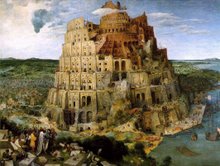
From the show "Fragments"
By Blake Ward
Last night I made my obligatory trek to Chelsea to see the latest and greatest installment of chrome bunnies and iconccized household items being carefully scrutinized by a remarkably unchanging group of aging hipsters. They stand they criticize and they dribble free wine into the collars of their white turtlenecks. The night wears on and the atmosphere thickens. The distinction between the art and the spectators blurs and I find more pleasure observing a well heeled man in a tailored suit seriously scrutinizing a headless mannequin than I possibly could looking at the headless mannequin for myself.
Finally we take the elevator to the fourteenth floor of the Chelsea arts tower and step out into a dream. we walk into a room with a sprawling panorama of New York City and the Hudson river that is dazzling. I have come with two other artists Alexandra Pacula, and Fabio D Aroma, all three of us stop and for once were totally speechless. In this space were numerous small sculptures, active and restless fragments of nudes. They seemed healthy, vigorous, and alive, though they had been shattered. The show "Fragments" by Canadian artist Blake Ward and founder of Motive Art is Raising funds for No More Landmines a UK based organization dedicated to clearing landmines leftover from wars and making it possible for people to return to their land without risk of death or injury.
This show should be a challenge to every artist who sees it. Social change has been fundamental to modern art. Feminist art, political art, the freedom to do your own thing. Blake is an artist who is taking things a step further. He looks at the world and makes work that comments on it and makes a difference. Like Tom Wolfe's books his sculptures are a call to an art less self absorbed more and worldly.
Click here for a BBC story about the artist.



